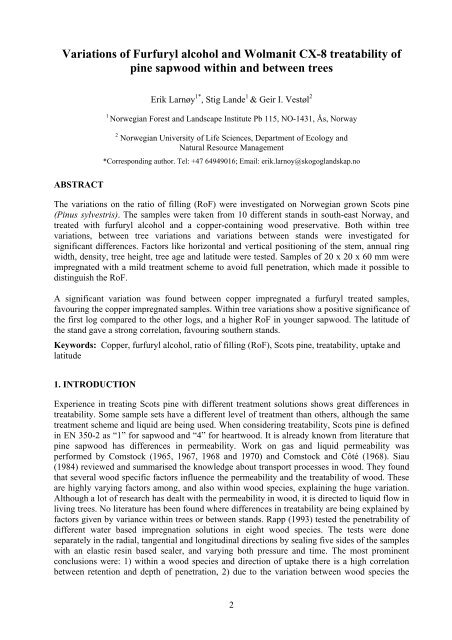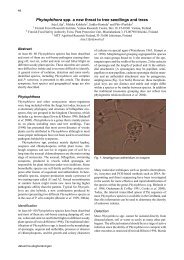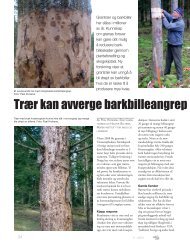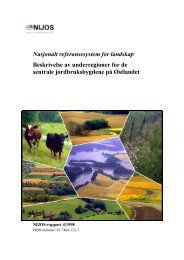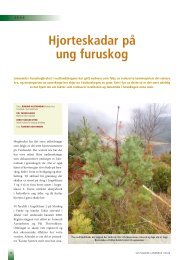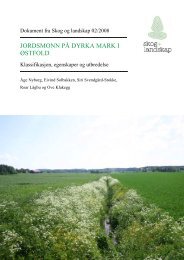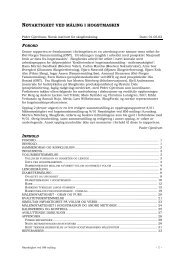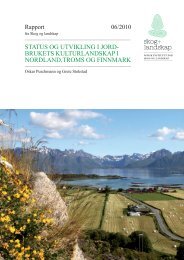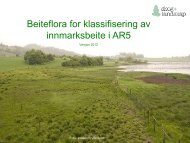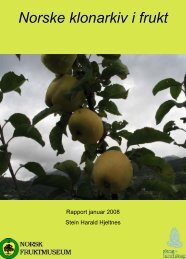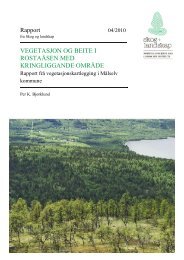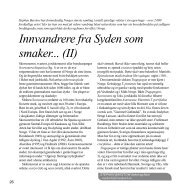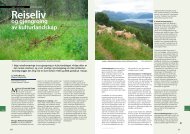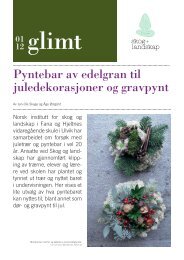Variations of Furfuryl alcohol and Wolmanit CX ... - Skog og landskap
Variations of Furfuryl alcohol and Wolmanit CX ... - Skog og landskap
Variations of Furfuryl alcohol and Wolmanit CX ... - Skog og landskap
Create successful ePaper yourself
Turn your PDF publications into a flip-book with our unique Google optimized e-Paper software.
<strong>Variations</strong> <strong>of</strong> <strong>Furfuryl</strong> <strong>alcohol</strong> <strong>and</strong> <strong>Wolmanit</strong> <strong>CX</strong>-8 treatability <strong>of</strong><br />
pine sapwood within <strong>and</strong> between trees<br />
ABSTRACT<br />
Erik Larnøy 1* , Stig L<strong>and</strong>e 1 & Geir I. Vestøl 2<br />
1 Norwegian Forest <strong>and</strong> L<strong>and</strong>scape Institute Pb 115, NO-1431, Ås, Norway<br />
2<br />
Norwegian University <strong>of</strong> Life Sciences, Department <strong>of</strong> Ecol<strong>og</strong>y <strong>and</strong><br />
Natural Resource Management<br />
*Corresponding author. Tel: +47 64949016; Email: erik.larnoy@sk<strong>og</strong><strong>og</strong>l<strong>and</strong>skap.no<br />
The variations on the ratio <strong>of</strong> filling (RoF) were investigated on Norwegian grown Scots pine<br />
(Pinus sylvestris). The samples were taken from 10 different st<strong>and</strong>s in south-east Norway, <strong>and</strong><br />
treated with furfuryl <strong>alcohol</strong> <strong>and</strong> a copper-containing wood preservative. Both within tree<br />
variations, between tree variations <strong>and</strong> variations between st<strong>and</strong>s were investigated for<br />
significant differences. Factors like horizontal <strong>and</strong> vertical positioning <strong>of</strong> the stem, annual ring<br />
width, density, tree height, tree age <strong>and</strong> latitude were tested. Samples <strong>of</strong> 20 x 20 x 60 mm were<br />
impregnated with a mild treatment scheme to avoid full penetration, which made it possible to<br />
distinguish the RoF.<br />
A significant variation was found between copper impregnated a furfuryl treated samples,<br />
favouring the copper impregnated samples. Within tree variations show a positive significance <strong>of</strong><br />
the first l<strong>og</strong> compared to the other l<strong>og</strong>s, <strong>and</strong> a higher RoF in younger sapwood. The latitude <strong>of</strong><br />
the st<strong>and</strong> gave a strong correlation, favouring southern st<strong>and</strong>s.<br />
Keywords: Copper, furfuryl <strong>alcohol</strong>, ratio <strong>of</strong> filling (RoF), Scots pine, treatability, uptake <strong>and</strong><br />
latitude<br />
1. INTRODUCTION<br />
Experience in treating Scots pine with different treatment solutions shows great differences in<br />
treatability. Some sample sets have a different level <strong>of</strong> treatment than others, although the same<br />
treatment scheme <strong>and</strong> liquid are being used. When considering treatability, Scots pine is defined<br />
in EN 350-2 as “1” for sapwood <strong>and</strong> “4” for heartwood. It is already known from literature that<br />
pine sapwood has differences in permeability. Work on gas <strong>and</strong> liquid permeability was<br />
performed by Comstock (1965, 1967, 1968 <strong>and</strong> 1970) <strong>and</strong> Comstock <strong>and</strong> Côté (1968). Siau<br />
(1984) reviewed <strong>and</strong> summarised the knowledge about transport processes in wood. They found<br />
that several wood specific factors influence the permeability <strong>and</strong> the treatability <strong>of</strong> wood. These<br />
are highly varying factors among, <strong>and</strong> also within wood species, explaining the huge variation.<br />
Although a lot <strong>of</strong> research has dealt with the permeability in wood, it is directed to liquid flow in<br />
living trees. No literature has been found where differences in treatability are being explained by<br />
factors given by variance within trees or between st<strong>and</strong>s. Rapp (1993) tested the penetrability <strong>of</strong><br />
different water based impregnation solutions in eight wood species. The tests were done<br />
separately in the radial, tangential <strong>and</strong> longitudinal directions by sealing five sides <strong>of</strong> the samples<br />
with an elastic resin based sealer, <strong>and</strong> varying both pressure <strong>and</strong> time. The most prominent<br />
conclusions were: 1) within a wood species <strong>and</strong> direction <strong>of</strong> uptake there is a high correlation<br />
between retention <strong>and</strong> depth <strong>of</strong> penetration, 2) due to the variation between wood species the<br />
2


